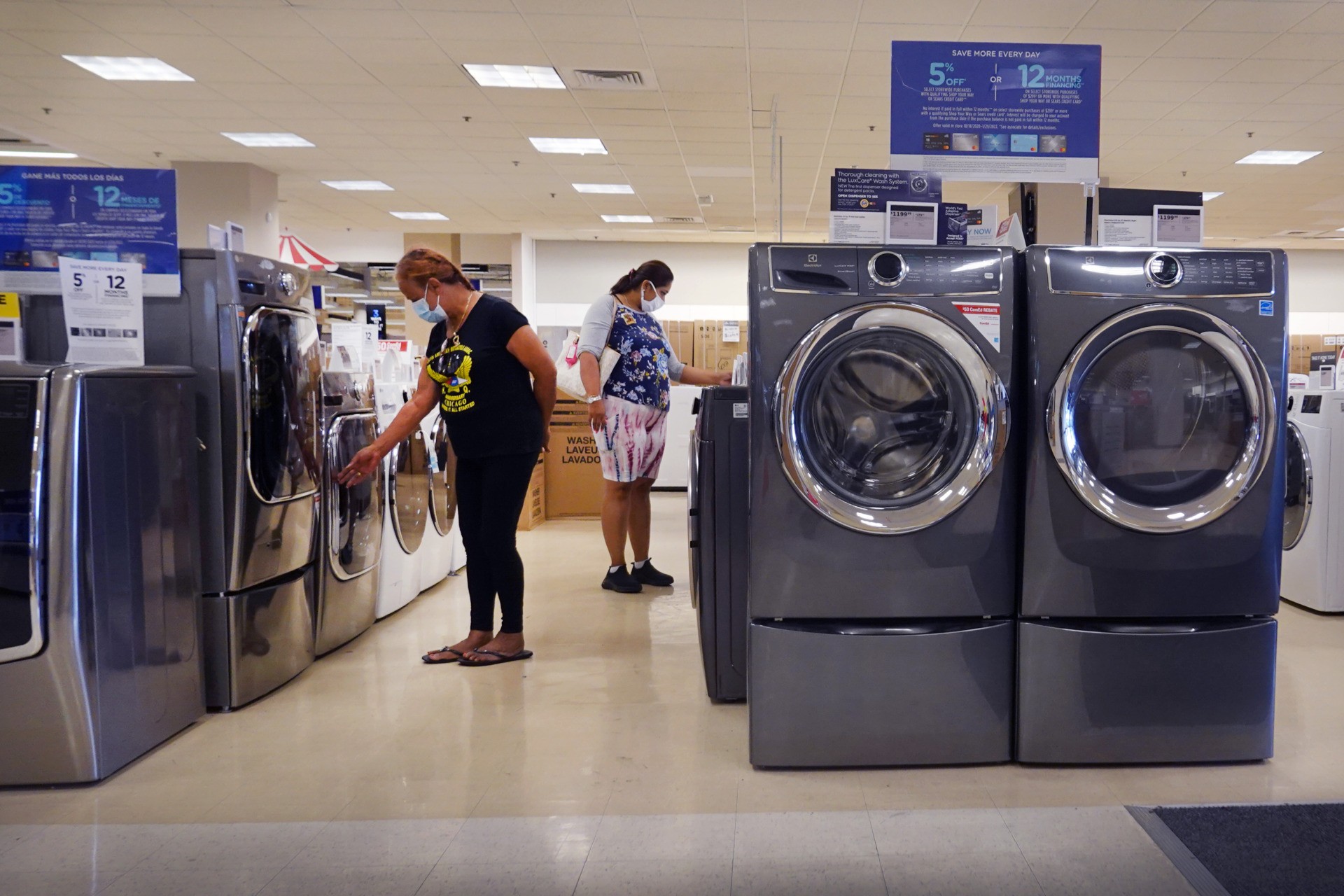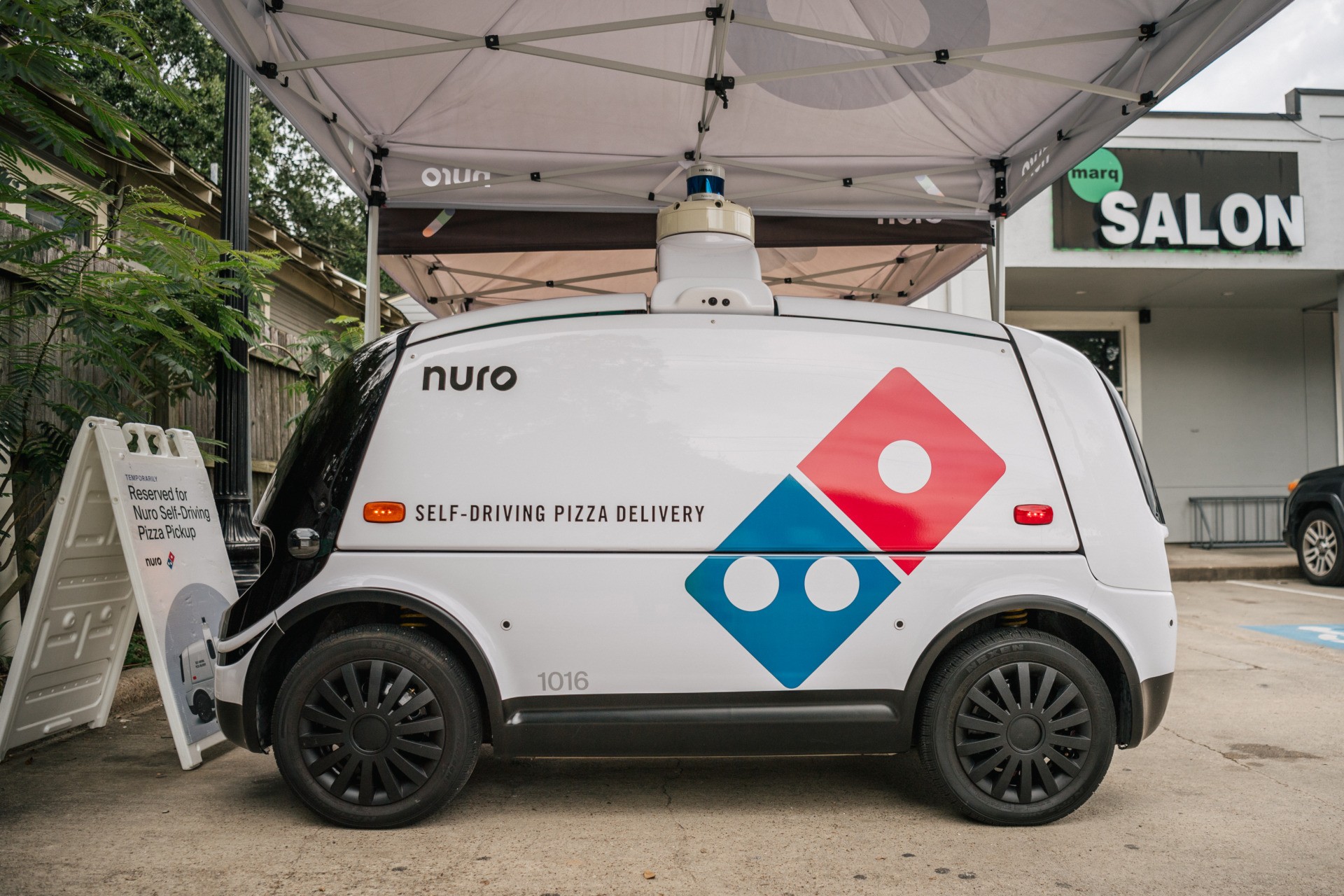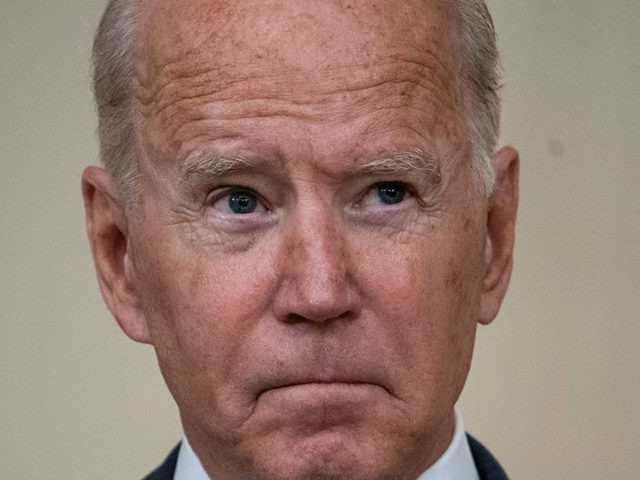Orders for durable goods were uneven in July, suggesting that businesses continue to invest but households may be pulling back on spending.
Headline durable goods orders decreased slightly in July, falling one-tenth of a percentage point to a seasonally adjusted $257.2 billion. That was better than the expected decline of 0.5 percent.
But beneath the surface, there was a lot of variance in the categories of durable goods. Some of that came from the extremely volatile category of non-defense aircraft, where orders fell 48.9 percent.
But there was also a sizeable pullback in orders for electronic equipment, appliances, and components. These shrank 1.8 percent, the first contraction in 11 months. Even with the contraction, however, this category remains extremely elevated at nearly $12.8 billion compared with $11.2 billion.

SCHAUMBURG, ILLINOIS – AUGUST 17: Customers look over appliances in a department store on August 17, 2021 in Schaumburg, Illinois. Spending at U.S. retailers fell 1.1% last month compared with June according to a Commerce Department report issued today. (Photo by Scott Olson/Getty Images)
There was also a big drop in orders for communications equipment. These fell 4.5 percent, the largest decline since December’s 9.7 percent pullback amid the winter crescendo of covid infections.
These are categories where household purchases have a lot of influence on the overall numbers. So the declines would seem to indicate a pullback by consumers in July, which is confirms the worse than expected crash in retail sales in July. A combination of high prices and rising coronavirus infections may be cajoling households into a precautionary savings mode.
Other categories held up much better. Orders of computers and related products rose 3.3 percent. Orders of machinery were up 2.9 percent. Motor Vehicle orders rose 5.8 percent. perhaps indicating that some of the production slowdowns due to a shortage of computer chips has eased.
A category known as core capital goods—which excludes defense spending and aircraft—was flat for the month. But this category, which is often taken as a proxy for business investment, is at an all-time high of $76.5 billion. It was close to $65 billion a month prepandemic, which then represented an elevated level compared to the end of the Obama era.
It’s likely that businesses have ramped up capital investment, buying machinery and computers, in an effort to offset a shortage of skilled labor.

HOUSTON, TEXAS – JULY 22: A Domino’s Pizza self-driving delivery vehicle is shown on July 22, 2021 in Houston, Texas. The company has said that select customers in Houston who make pre-paid delivery orders from its store in Woodland Heights, during certain dates and times, can have their pizza delivered to them by their self-driving Nuro R2 robot. Domino’s pizza has reported that its U.S. same-store sales have increased by 3.5% in its latest quarter of production. CEO Ritch Allison has said that the company will raise wages for employees, in certain markets and positions, at corporate-owned restaurants. Allison also noted that a lack of staffing and equipment shortages have been major hurdles as the company continues to deal with problems tied to the pandemic. (Photo by Brandon Bell/Getty Images)
Of course, households and businesses cannot keep moving in opposite directions for very long. So either household spending will have to pick up to meet business investment or investment will have to come down to match household spending.

COMMENTS
Please let us know if you're having issues with commenting.